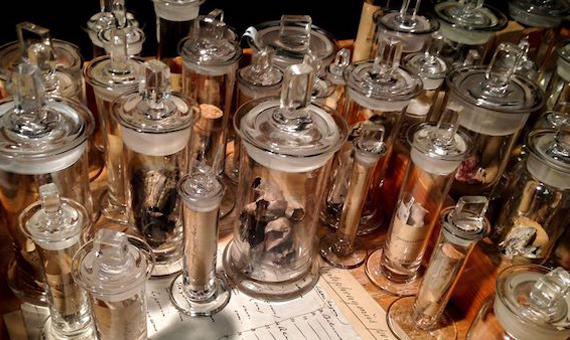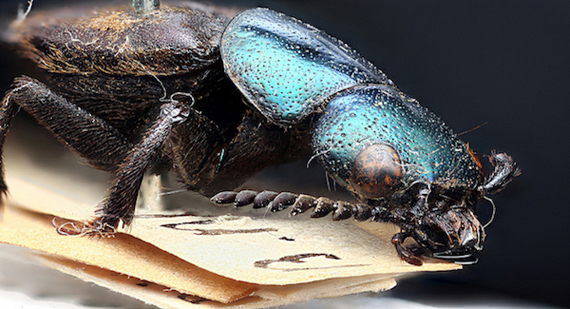The contributions of Charles Darwin (February 12, 1809 – April 19, 1882) to science and to our understanding of the world have earned him his place in history. The father of the theory of natural selection managed to document the idea of the evolution of the species thanks to his amazing capacity for observation and analysis. He has streets and squares named after him, but how much do you really know about Darwin? Here we discover the unknown face of the prestigious scientist.

Frustrated doctor and priest
Before he ended up dedicating himself to scientific research, Darwin was very close to other professions. In 1825, at his father’s request, he entered the prestigious University of Edinburgh to study medicine. However, he never succeeded in liking the lectures, which he considered boring, nor was he enchanted by surgery, which he found distressing. After two unsuccessful years he abandoned medicine, and then, in 1828, his father, insisting that his son would not stay idle, convinced him to start an ecclesiastical career at Christ’s College, Cambridge.

Paradoxically, it was while attending this institution that the chance event would occur that would lead Darwin to become a great scientific figure. At Christ’s College, Darwin voluntarily attended classes given by the botanist and entomologist John Henslow, of whom he became a friend and follower. He completed his ecclesiastical studies in 1831. That same year, just back from a geological expedition in Wales, Darwin received a letter from the Reverend Henslow in which he proposed the possibility of embarking on the Beagle as a naturalist with Captain Robert Fitzroy and accompanying him on a trip around the world. The consequences of this letter are already part of history.
Obsessed with lists
“To marry: children (God willing), a companion, a home. Not to learn French, nor go to America, nor go up in a balloon. Not to marry: freedom to go where one likes, not being forced to visit relatives. No one will take care of you in old age.” Thus reads Darwin’s notebook in 1838. Divided into two columns with a dozen reasons on each side, the famous scientist analyzed the advantages and disadvantages of marrying his cousin Emma Wedgwood. The conclusion is just below: “Marry”. Then, it moves quickly to the next dilemma: “When? Soon or late?” followed by a new list of reasons. This episode perfectly illustrates the extreme analytical thinking that Darwin developed throughout his life.
As a married man, he recorded every household expense and, despite his good economic situation, he made New Year’s resolutions to achieve small savings. As a parent, he wrote down when his children were crying or when they blushed. However, the most important list of his career he wrote much earlier, at age 22, and it only contained eight points. It summed up all the reasons given by his father not to embark aboard the Beagle, on the expedition that would turn him into a scientist. In the end, it was his uncle Josiah Wedgewood –later, also his father-in-law– whose counterarguments on the side of adventure won the battle.
Chronically ill
Something quite unknown about Darwin are the health problems he suffered throughout his adult life. He had an unusual combination of symptoms that left him weakened for long periods of time. However, Darwin came to believe that this physical weakness helped him in his work: “Being sick, as I have spent several years of my life, has saved me from the distractions of society and entertainment.” The first signs began during his time as a medical student in Edinburgh, when Darwin was already considered too sensitive to the sight of blood and to the brutality of the surgery of the nineteenth century.

Although he didn’t tell anyone for fear they would forbid him from going on the expedition, Darwin began suffering chest pain and heart palpitations the same day he was due to board the Beagle. The following five years of the voyage around the world were marked by multiple migraines. Once back in England, the symptoms continued: from insomnia, vomiting and cramps to anxiety and spasms. No conventional treatment of the time worked and even today there is still speculation about what illness could have been behind such varied symptoms. Some experts argue that it was orthostatic intolerance, a dysfunction of the nervous system that occurs while the person is standing.
Passion for barnacles
After five years of scientific observation aboard the Beagle, Charles Darwin arrived in England in 1836 with the ideas that would later make him one of the most renowned scientists in history: the transmutation of species and evolution by natural selection. However, when he finished writing his travel journals, Darwin decided not to further develop these great ideas, but rather he devoted himself to one of his true passions: barnacles. This hobby was not new, as during his university days Darwin used to skip his medicine lectures to devote himself to the study of marine invertebrates. But this time, he devoted himself exclusively to the barnacle crustaceans for eight years, from 1846 to 1854, dissecting, classifying and writing about different species of barnacles every day.

Although we often speak of this stage as a distraction from his work, the fact is that the four books he published on this subject made him a renowned figure in the British zoological community. In addition, this research was a key component in the development of On the Origin of Species. Studying a group of organisms in such depth, both in their living and fossilized forms, allowed him to observe and to understand how the diversity of a species had developed over time.
Geological detective
Although Darwin’s fame is mainly due to his work as a biologist and naturalist, the truth is that the scientist also developed many other facets, some of them, such as geology, with equal zeal. His five years on the Beagle inspired him to come up with the idea of the transmutation of species, but also turned him into an eminent geologist. Darwin wrote a detailed diary, of which today we still retain 145 entries, on the fossils he encountered during his expeditions in Brazil, Chile, the Galapagos Islands, Tahiti,… These extensive observations, besides making him famous, helped him to devise his theory of natural selection.
The numerous fossils that he found in South America of the same species (of armadillos and of sloths), but scattered in different places and from different origins led him to wonder: Why did some species go extinct and then, in the same place, did other similar but distinct species take their place? The explanation that he developed after observing in different places fossils of the “same” creature is that both animals, similar but not identical, had emerged with modifications from common ancestors. But if it was God who had created each species separately and in different places, how could this be? “Species adapt and alter the race to a changing world,” Darwin himself answered in 1837, when the study of finches, fossils and barnacles was buttressing his theory.
Collector of beetles
Even as a child, Darwin was very curious about nature. When he started school in his small hometown of Shrewsbury, he already had a special interest in natural history that led him to collect all kinds of rocks, leaves and insects. What was special about Darwin was that –unlike many adults– he maintained that curiosity throughout his lifetime. At Christ’s College, Cambridge, he joined the fashion of collecting beetles, thanks to his cousin William Darwin Fox. Some of the discoveries he made were later published in James Francis Stevens’ Illustrations of British entomology.

During his expedition on the Beagle, he always found the opportunity to continue collecting these animals. In fact, a recent study has claimed that one of the beetles that Darwin found in 1832 on the Argentinean coast of Bahia Blanca was a new species, which 182 years later has been dubbed Darwinilus sedarisi. “Whenever I hear talk about the capture of rare beetles, I feel like an old warhorse who suddenly hears the sound of a trumpet,” said the scientist.
Comments on this publication